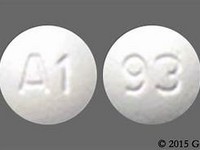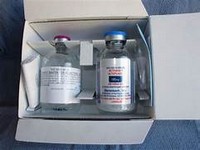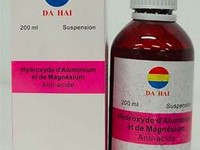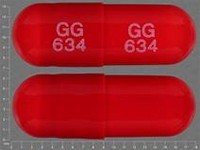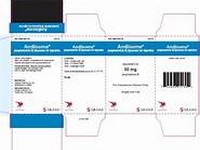propafenone hydrochloride

CLINICAL USE
Anti-arrhythmic agent:Ventricular arrhythmias Paroxysmal supraventricular tachyarrhythmias, (including paroxysmal atrial flutter or fibrillation, and paroxysmal re-entrant tachycardias involving the AV node or accessory pathway) where standard therapy has failed or is unsuitable
DOSE IN NORMAL RENAL FUNCTION
>70 kg: 150–300 mg 3 times dailyIf <70 kg start with a lower dose
PHARMACOKINETICS
Molecular weight :377.9 %Protein binding :>95 %Excreted unchanged in urine : <1 Volume of distribution (L/kg) :1.9–3half-life – normal/ESRD (hrs) :2–10 (10–32 hours in slow metabolisers)/Unchanged DOSE IN RENAL IMPAIRMENT
GFR (mL/MIN)
20 to 50 : Dose as in normal renal function 10 to 20 : Dose as in normal renal function <10 : Dose as in normal renal function. Use with caution DOSE IN PATIENTS UNDERGOING RENAL REPLACEMENT THERAPIES
CAPD :Not dialysed. Dose as in GFR <10 mL/min HD :Not dialysed. Dose as in GFR <10 mL/minHDF/high flux :Unknown dialysability. Dose as in GFR <10 mL/minCAV/VVHD :Not dialysed. Dose as in normal renal function IMPORTANT DRUG INTERACTIONS
Potentially hazardous interactions with other drugsAnti-arrhythmics: increased myocardial depression with other anti-arrhythmicsAntibacterials: increased metabolism with rifampicin (reduced effect)Anticoagulants: enhanced anticoagulant effect of coumarinsAntidepressants: increased risk of arrhythmias with tricyclics; metabolism of propafenone possibly inhibited by paroxetine (increased risk of toxicity)Antihistamines: increased risk of ventricular arrhythmias with mizolastine– avoid concomitant useAntipsychotics: increased risk of ventricular arrhythmias with antipsychotics that prolong the QT intervalAntivirals: concentration of propafenone increased by amprenavir and ritonavir, increased risk of ventricular arrhythmias – avoid concomitant useBeta-blockers: increased myocardial depression; increased concentration of metoprolol and propranololCardiac glycosides: increased digoxin concentration – halve digoxin doseCiclosporin: possibly increased ciclosporin concentration5HT 3 antagonists: increased risk of ventricular arrhythmias with dolasetron – avoid concomitant use; avoid with tropisetron Ulcer-healing drugs: levels increased by cimetidine ADMINISTRATION
Reconstition
– Route
Oral Rate of Administration
–Comments
– OTHER INFORMATION
Half-life depends on acetylator status of patientEnsure that electrolyte disturbances are corrected before commencing treatmentMetabolised by CYP2D6 isoenzyme Therapeutic plasma concentrations are 150–1500 ng/mL
See how to identify renal failure stages according to GFR calculation
See how to diagnose irreversible renal disease
Home



